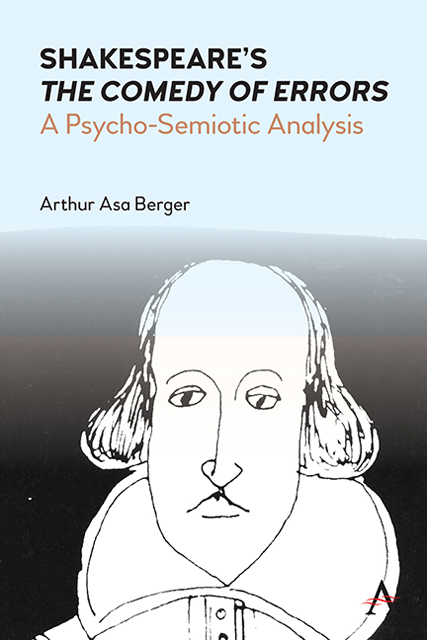3 - Semiotics and Humor
Published online by Cambridge University Press: 10 January 2023
Summary
The semiotic theory of humor is allied to the cognitive theory. Semiotics asks how meaning is generated in daily life and, for our purposes, in any text. It seeks to answer this question by analyzing the signification found in a given text and by trying to elicit the polar oppositions (or sets of paired opposites) implicit in any work. It also seeks to understand the way the narrative functions (when there is one). These two operations involve investigating the paradigmatic (or oppositional) and the syntagmatic (or linear, narrative) aspects of the text. According to the French anthropologist Claude Lévi-Strauss, the syntagmatic analysis of a text tells us the manifest content, what the text (a joke or any other form of humor) is about, and the paradigmatic analysis tells us the latent content, what the joke “really” means. And this meaning is hidden; it is not the same as the subject of the joke or work of humor or text.
An Overview of Semiotics
Since many people are not familiar with semiotics, I offer here an overview of some of its basic concepts.
Ferdinand de Saussure's book, Course in General Linguistics, published in 1915 (and in an English translation in 1959) is not known to the general public. And Saussure is not a name that many people are familiar with—the way they are with Freud, Darwin, Einstein or Marx. But this book is, we now recognize, a seminal book, one of the most important books published in the twentieth century, and Saussure's ideas have influenced scholars not only in linguistics but in many other disciplines.
Saussure is the founding father of semiology—which means, literally, “words about” or “the study of” (logos, logy) signs (sēmeȋon). Sēmeîon is the Greek word for sign. An American philosopher, Charles Sanders Peirce, developed a different theory of signs, which he called semiotics, and it is semiotics that is now accepted as the term to be used for the study of signs.
But what's a sign? And how do signs function? For our purposes, let me define a sign as “anything that can be made to stand for something else.
- Type
- Chapter
- Information
- Shakespeare’s The Comedy of ErrorsA Psycho-Semiotic Analysis, pp. 15 - 28Publisher: Anthem PressPrint publication year: 2022

